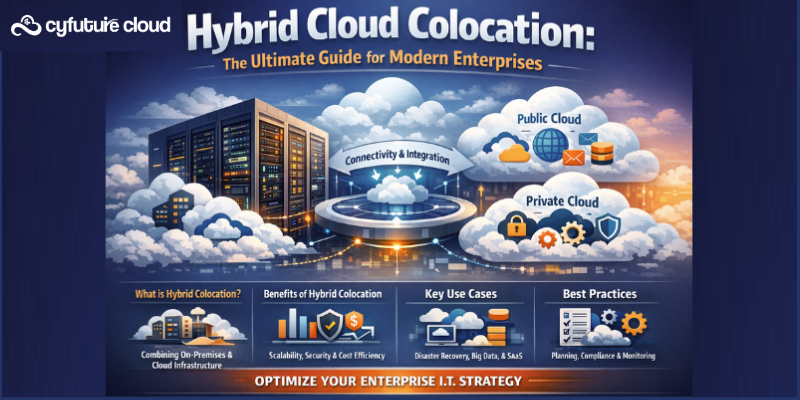Table of Contents
With the rise of cloud computing, traditional IT infrastructure has become more flexible, scalable, and economical. Approximately 332.3 billion dollars will be spent on public cloud services by 2021, according to a Gartner analysis.
It becomes increasingly challenging to manage many cloud environments as cloud computing usage increases. To operate in a multi-cloud environment, many companies are using hybrid clouds, which integrate public and private clouds. This complexity is further increased by the use of multiple cloud providers, each with distinct tools and services.
When managing a multi-cloud system, a lack of high-level coordination and competence can lead to increased expenses, security risks, and operational inefficiencies. In this article, we examine the challenges of managing several clouds and offer tips on how companies can overcome them. Stay tuned for more information on the cloud’s future and how to make the most of your multi-cloud setup if you’re interested!
Metacloud and Supercloud Growth
The metacloud and supercloud are two new cloud architectures that have recently emerged as a result of the complexity of multi-cloud settings becoming more and more sophisticated. Businesses using multiple clouds are finding that these new cloud models are changing the rules of the game.
A metacloud is an abstraction layer that sits on top of several clouds and offers a single view of the complete cloud infrastructure. On the other hand, a centralised platform that combines many cloud services into a single, comprehensive solution is referred to as a supercloud.
Metacloud and supercloud, in contrast to conventional cloud services, enable a level of flexibility and scalability that is unequalled by any one cloud provider. While supercloud offers a single point of control for managing many clouds, metacloud enables companies to avoid vendor lock-in by utilising several clouds.
Using supercloud and metacloud has several benefits. One benefit is that they let companies take advantage of the advantages of various cloud service providers, which enhances performance and lowers costs. Also, by dispersing data and applications across various clouds, they offer increased security and resilience. They also provide greater flexibility and agility, making it simpler for enterprises to scale up or down as their needs change.
Spending on multi-cloud management solutions is anticipated to reach $4.5 billion by 2023, according to a survey by IDC, demonstrating a rising need for these new cloud models. Businesses are using supercloud and metacloud to help them traverse this new world as multi-cloud infrastructures’ complexity rises. Continue reading to find out more about these new cloud models and how they might help your company.
Using Metacloud and Supercloud to Manage Complexity
Managing the complexity of multi-cloud settings has become a big concern as businesses continue to use cloud computing. However the introduction of new cloud architectures like supercloud and metacloud is making this process easier. We will examine how these new cloud models assist organisations in managing the complexity of multi-cloud systems in this blog post, as well as give examples of typical services that metacloud and supercloud both offer.
The complexity of multi-cloud settings is managed in a number of ways with the aid of metacloud and supercloud. The fact that these new cloud models offer a single view of the complete cloud infrastructure is one of the main advantages of employing them. This reduces the complexity of the management process by enabling enterprises to manage many clouds as if they were a single entity. Metacloud and supercloud also provide a number of tools and services that make things like deployment, monitoring, and security easier.
Businesses can manage the complexity of multi-cloud setups with the use of a number of common services provided by metacloud and supercloud. Cloud management and orchestration is one such service that enables companies to manage many clouds through a single interface. This service may offer functions like scaling, monitoring, and deployment that are automated. Cloud security and compliance is another popular solution that aids companies in making sure their multi-cloud environment is safe and adheres to industry standards. Finally, cloud cost management, which offers insights into usage and cost to assist businesses optimise their cloud spending, is frequently provided by metacloud and supercloud.
81% of businesses have a multi-cloud strategy, and 38% have a hybrid cloud approach, according to a RightScale survey. Businesses are turning to metacloud and supercloud to assist them manage this complexity as multi-cloud settings get more sophisticated. Metacloud and supercloud assist enterprises in maximising the advantages of cloud computing by giving a unified picture of the cloud infrastructure and a variety of tools and services to streamline administration operations.
Advantages of Supercloud vs Metacloud
As more companies use cloud computing, managing the complexity of various clouds has grown to be a significant concern. However the introduction of new cloud architectures like supercloud and metacloud is making this process easier. The advantages of employing metacloud and supercloud in a multi-cloud system will be discussed in this blog.
A major advantage of using metacloud and supercloud is increased productivity and efficiency. With the help of these new cloud models, businesses can manage many clouds as if they were one large cloud, giving them a unified view of the entire cloud infrastructure. As a result, the management process becomes less complex and IT resources can be used for other projects. In order to further boost productivity and efficiency, metacloud and supercloud frequently include a variety of tools and services that automate processes like deployment, scaling, and monitoring.
The improved flexibility and scalability of employing metacloud and supercloud is another significant advantage. Businesses can benefit from the characteristics of each cloud provider and prevent vendor lock-in by utilising a variety of them. Furthermore, metacloud and supercloud frequently include tools and services that facilitate scaling up or down as business requirements change, offering greater flexibility than any one cloud provider could.
And last, there are significant cost reductions and decreased complexity offered by metacloud and supercloud. Businesses can benefit from competitive pricing and avoid the expense of vendor lock-in by utilising various cloud providers. Metacloud and supercloud frequently provide tools and services that assist businesses in maximising their cloud spending by offering insights into usage and cost. Ultimately, metacloud and supercloud lessen the complexity of the total cloud environment, making it easier to administer and lowering the risk of errors by streamlining the management of various clouds.
An increase in the demand for multi-cloud management solutions can be seen in the fact that 81% of enterprises use two or more public cloud providers, according to a Gartner survey. Metacloud and supercloud are gaining popularity among companies working in a multi-cloud environment because they offer a single picture of the cloud infrastructure, enhanced flexibility and scalability, significant cost savings, and decreased complexity.
Challenges and Threats
New cloud models like metacloud and supercloud are emerging as a solution to handle the complexity of various cloud providers as businesses continue to use cloud computing and multi-cloud setups become more widespread. However, there are difficulties and dangers involved with integrating these new cloud models, just like with any new technology. The difficulties and dangers of adopting supercloud and metacloud in a multi-cloud system will be discussed in this blog.
Integration is one of the most difficult aspects of putting metacloud and supercloud into practise. For these new cloud models to be successful, integration work is frequently necessary, especially when interfacing with current IT systems. Integration can become even more difficult because many cloud providers each have unique APIs and integration requirements. The requirement for qualified individuals to oversee the new cloud models presents another difficulty, particularly for smaller businesses that do not have the funds to engage specialised IT workers.
The use of supercloud and metacloud is not without risk. The possibility for data security breaches is a significant danger. Businesses who use numerous cloud providers could need to transmit data between them, which raises the risk of data breaches. Also, if different cloud providers have different security rules and procedures, having several cloud providers can make it harder to monitor data protection.
Vendor lock-in is an additional danger. While using numerous cloud providers might increase flexibility and reduce costs, it can also make switching between providers more challenging. This is especially true if a company uses a custom cloud management tool that is difficult to transfer to different service providers.
IDC found that managing complexity is the biggest issue for businesses employing multi-cloud environments, closely followed by integration and security. Businesses may take action to reduce risks and make sure they are getting the most out of their multi-cloud environment by being aware of the difficulties and hazards involved with integrating metacloud and supercloud.
In a Nutshell
New cloud models like metacloud and supercloud are emerging as a solution to handle the complexity of various cloud providers as businesses continue to adopt cloud computing and multi-cloud setups become more complex. These new cloud models can increase productivity, increase flexibility and scalability, and save costs for enterprises by providing common services and streamlining management.
It’s crucial to realise that putting these new cloud models into practise has risks and obstacles, notably with regard to integration, data security, and vendor lock-in. To guarantee that they are successfully integrating these new cloud models, firms must carefully assess their needs and goals and engage with qualified staff.
Metacloud and supercloud are therefore useful solutions for companies who want to profit from multi-cloud setups while lowering the complexity and expenses related to administering them. These new cloud models can, with the correct strategy, assist firms in achieving their objectives and maintaining their competitiveness in the current, quickly evolving business environment.
Recent Post
Send this to a friend

 Server
Colocation
Server
Colocation CDN
Network
CDN
Network Linux
Cloud Hosting
Linux
Cloud Hosting Kubernetes
Kubernetes Pricing
Calculator
Pricing
Calculator
 Power
Power
 Utilities
Utilities VMware
Private Cloud
VMware
Private Cloud VMware
on AWS
VMware
on AWS VMware
on Azure
VMware
on Azure Service
Level Agreement
Service
Level Agreement 



















